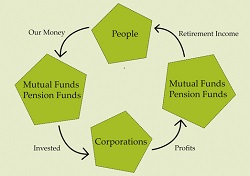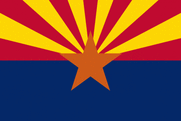|
People, Profits, & Pensions |
|
Arizona Public Employees & Foot Locker
Monday, March 10, 2014
On Friday, Foot Locker, Inc. reported its fourth quarter and full year 2013 results. The news would have been welcomed in Arizona, "In 2013 the Company generated its fourth consecutive double digit percentage increase in annual earnings per share. It is also the third consecutive year in which the Company achieved record earnings as Foot Locker, Inc." The Arizona State Retirement System owned 108,100 shares as of closing on December 31st, 2013, and at that time the shares were worth just over $5 million (according to nasdaq.com). A fact sheet from the System notes that it represented 542,845 members and 690 employers (state and local governments and agencies) as of June 30, 2013. At that time, it managed $30.6 billion worth of assets. New York City based Foot Locker operates 3,335 stores in 23 countries. For more connections between working, middle class people and the world's biggest corporations, please visit our archives. The Bigger Picture:Will Profits from Big Macs Add to Your Retirement Income?In 1948, the McDonald brothers redesigned and remodelled their drive-in restaurant in San Bernardino, California. Taking inspiration from Henry Ford's assembly-line, they created the fast food revolution, with the quick service and low prices we now take for granted. In that same year, the U.S. National Labor Relations Board ruled unions could include pension issues in contract negotiations. That ignited a massive expansion of pension plans. In the 1950s, pension funds started buying stocks, rather than just bonds or their equivalents; in addition mutual funds came of age. With these two developments working, middle class people became owners of big business. At first, their stakes were modest, but steadily growing. And in just a few decades, they gained controlling interests in many large corporations through their funds. Management guru Peter Drucker has called it, "...one of the most startling power shifts in economic history." Now, working people reap the benefits of those investments, collecting much of the profit distributed by McDonald's and other big corporations. Discover how the pieces fit together. In Big Macs & Our Pensions: Who Gets McDonald's Profits? - a new booklet -(about 25-pages), you will:
You may not be among the owners of McDonald's. But if you belong to any pension plan, or contribute to a mutual fund or whole life insurance policy, you likely own pieces of some big corporations. More importantly, though, your retirement income will be bigger and grow more dependably than you would otherwise expect. Big Macs & Our Pensions: Who Gets McDonald's Profits? is now available at Amazon.com |

The Ownership Cycle
Copyright 2014. Robert F. Abbott, All Rights
Reserved.
|

 By: Robert F. Abbott, author of
By: Robert F. Abbott, author of  As the fourth quarter, 2013 earnings season winds down, we look at the connection between
Arizona's public employees and Foot Locker, a major retail chain.
As the fourth quarter, 2013 earnings season winds down, we look at the connection between
Arizona's public employees and Foot Locker, a major retail chain.